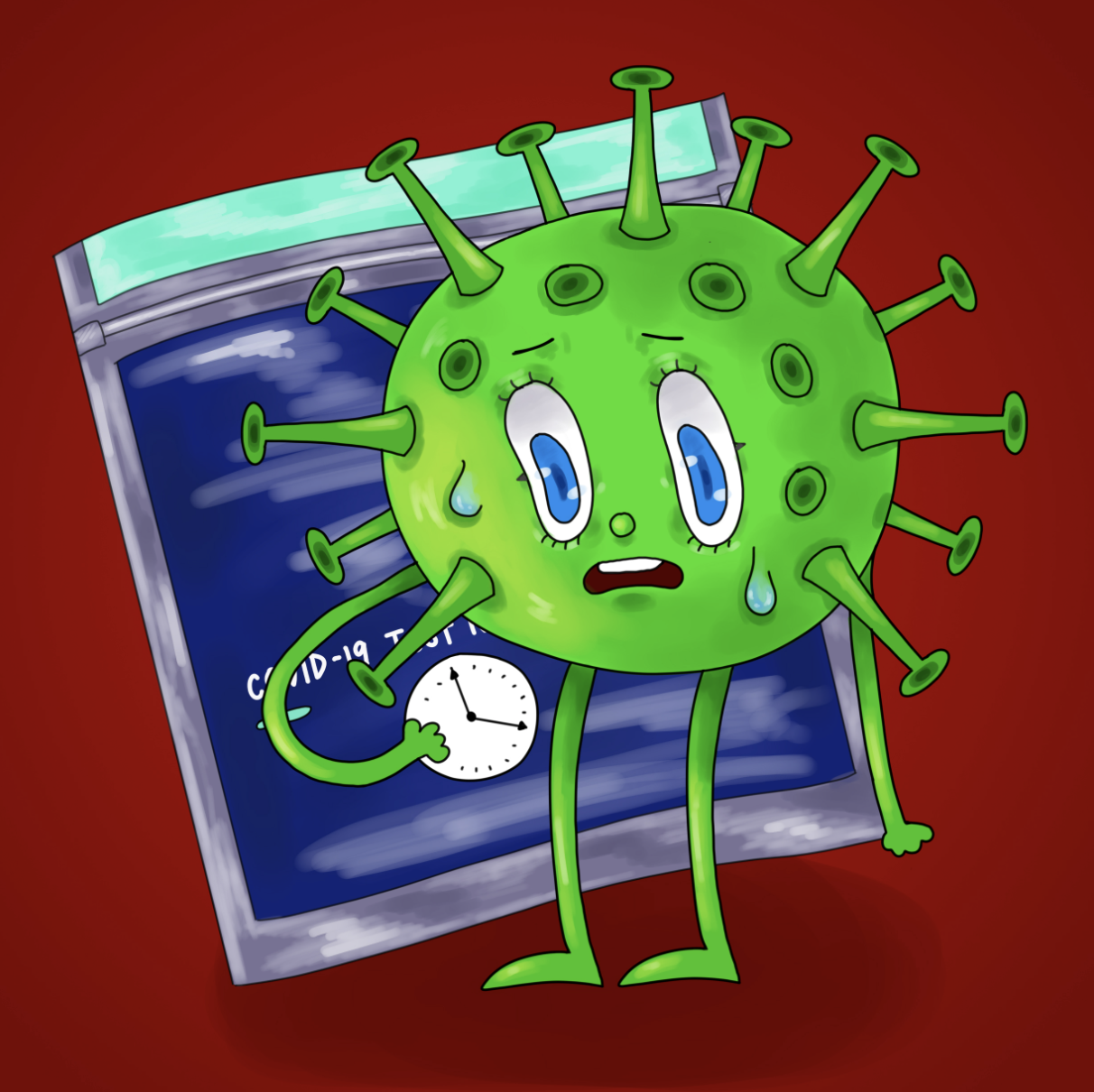Stanford’s vaccine requirement and regular testing have mostly kept coronavirus case counts low. Our test-positivity rate is 10 times lower than Santa Clara County’s and 22 times lower than California’s. But slow turnarounds for COVID tests may put that success at risk. Stanford should take immediate steps to speed up the results time of its testing program.
I have taken six tests since arriving on campus. Three tests produced results within a day. Two tests came back in three days. And one test took four days to return results. One of my friends recently waited six days.
According to Stanford University spokesperson E.J. Miranda, in September and October 2021, “the median time between kit activation and lab results received was 44 hours.” Five percent of tests in the past two months have taken longer than the 72 hours within which Stanford says people should expect results. When thousands of tests are being run each week, even a low delay rate can yield hundreds of late tests.
For example, Stanford’s COVID dashboard reported over 13,000 tests the week of Oct. 4. Using wait-time data for September and October, that means 5% of the total number of tests — corresponding to 670 people — took longer than 72 hours to produce results. Over 6,000 people, or 45 percent of the total number of tests, waited longer than the median of 44 hours and less than 72 hours.
Slow tests aren’t very useful. We test to inform decisions. All else being equal, faster information means we can make faster decisions. When it comes to preventing the spread of COVID through testing, faster decisions are better ones.
Take someone who is asymptomatic and positive for the coronavirus but doesn’t know it yet. They take a mandatory weekly test per Stanford’s policies. Because they have no symptoms, they continue their daily lives. They visit dining halls, go to class and see their friends indoors, unmasked, for extended periods of time.
Assume this person has 10 close contacts every 24 hours. If they find out they are positive within a day, they have maximally infected 10 people. Two days, 20 people. Four days, 40 people. Each day that they continue normal interactions increases the potential number of people infected. The sooner someone finds out they are positive, the sooner they can self-isolate.
People who feel sick may isolate themselves before receiving test results as a precaution. In these cases, lengthy wait times for test results are less likely to produce communal spread. But the prolonged uncertainty is damaging in itself. Do I have the common cold or do I have COVID? Whatever the answer, anxiety thrives in this indeterminacy — an indeterminacy that is resolved only when test results come back.
It seems a lot of students on campus aren’t feeling well right now. I hear sniffles and coughs in my classes that were nonexistent several weeks ago, but there have been very few positive COVID cases on campus recently — meaning it’s more likely those sniffles and coughs are the product of the common cold and congestion of communal college life than of COVID.
We don’t know that for sure, however. We do have a way of finding out. But testing is valuable only in proportion to the speed that results become available.
Stanford should be commended for the steps they are taking to increase how quickly students get their test results. Miranda said in an email that the University is adding more courier pickups to bring tests from drop-off locations to labs. Additionally, Color, Stanford’s COVID testing partner, “has increased their staffing and production capacity, as well as rerouted Stanford tests to labs that are closer to Stanford, allowing for shorter turnaround times.”
But those steps will be insufficient until they can substantially cut the 44-hour median time for test results and ensure that no one — rather than hundreds of people each week — has to wait longer than 72 hours to receive results. Results should be available ideally within 24 hours. Tests should also take around the same amount of time so that people can develop clear expectations about when they will find out their test status.
Stanford should consider taking the following additional steps:
First, Stanford should make rapid tests widely available for symptomatic people who fear they may have COVID. Rapid tests return results within half an hour. Polymerase chain reaction (PCR) tests processed at a lab are more accurate. But rapid tests are a crucial complement to PCR tests for people who are sick and reasonably suspect that they may have COVID.
Second, if Color isn’t able to quickly reduce test turnaround times, Stanford should consider hiring an additional vendor to carry out testing. Working with a single vendor has advantages: Stanford can develop a single system for collecting, transporting and tracking test results. An increase in test speed, however, is worth the financial and logistical challenges associated with hiring another vendor.
Finally, Stanford should encourage some people to return their tests earlier in the week or earlier in the day. Miranda said that tests returned on Friday generally take longer to produce results. Similarly, tests returned at the end of the day may take longer to process. Sharing that information widely with the campus community may be sufficient to make some people take their test on a different day or return it earlier in the day.
COVID is likely to become endemic: it isn’t going away anytime soon. Many experts suggest that testing, when combined with vaccination and other measures, will continue to be critical in efforts to fight the pandemic and protect public health. For Stanford, that means COVID testing may be a part of campus life for the foreseeable future. The entire campus community will be safer and less anxious if those tests consistently come back quickly.
